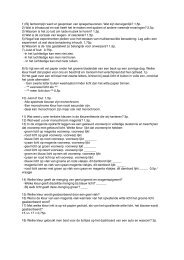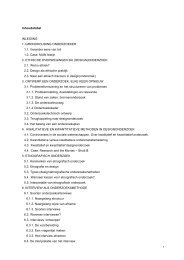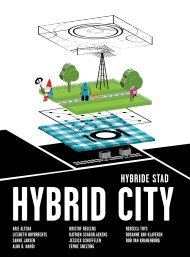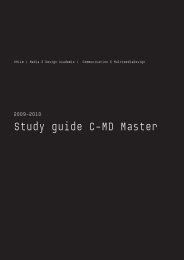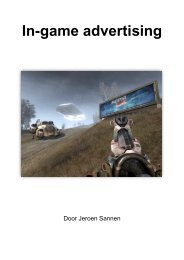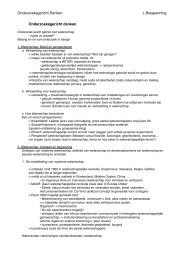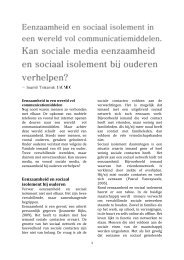Study guide C-MD Master - CMD-Stud - KHLim
Study guide C-MD Master - CMD-Stud - KHLim
Study guide C-MD Master - CMD-Stud - KHLim
You also want an ePaper? Increase the reach of your titles
YUMPU automatically turns print PDFs into web optimized ePapers that Google loves.
Module description<br />
In this course we merge research and narrative, researcher and<br />
researched. We work within a mixture of lectures, guest lectures,<br />
debates, showcases, creative and practical exercises and assignments.<br />
We study narrative structures of classic stories and the<br />
differences for interactive storytelling projects. After understanding<br />
what stories are and how to create them, we experiment with interactive<br />
storytelling ourselves. This is something we will perform in<br />
actual practice: our theoretical skills will be implemented in ‘hands<br />
on’ projects. Each student creates an individual (digital) story that<br />
can be experienced interactively.<br />
In Narratology, a story is the representation of a series consistent<br />
happening in which the human experience is dominant. Cause and<br />
effect are crucial in this traditional definition, but leave hardly any<br />
room for interactive storytelling. Other definitions give the entangled<br />
plot restrictions in time and space, which decline the possibilities<br />
for experiment in storytelling. What if a series fragmented<br />
happenings have hardly any causal connection but enough fabula?<br />
Can interactivity create a coherent story out of these gratuitous<br />
incidents? Can a story create a life of its own? What if a story is<br />
being told criss-cross different media? When will a story flirt so<br />
much with truth that it is no longer experienced as a story? Does a<br />
story looses ‘storyness’ if it paints in these different colours?<br />
In anthropology stories are often defined through interactivity,<br />
in which the story becomes a construction in a specific context,<br />
made together with the audience. The social interaction seems to<br />
give possibilities to connect stories to everyday life. This is something<br />
we see in psychotherapy as well, where stories of one’s life<br />
are used in reminiscence to strengthen the identity.<br />
“People shape their daily lives by stories of who they and others<br />
are and as they interpret their past in terms of these stories. Story,<br />
in the current idiom, is a portal through which a person enters the<br />
world and by which their experience of the world is interpreted and<br />
made personally meaningful. Narrative inquiry, the study of experience<br />
as story, then, is first and foremost a way of thinking about<br />
experience. Narrative inquiry as a methodology entails a view of the<br />
phenomenon. To use narrative inquiry methodology is to adopt a<br />
particular view of experience as phenomenon under study.”<br />
(Connelly & Clandinin, 2006, p. 375)<br />
Jos de Mul said that interactive stories struggle with the horseless<br />
carriage syndrome. Interactivity puts the ‘telling’ on hold through<br />
our expectations dictated by earlier media. (www.demul.nl). Our<br />
perception of storytelling elements is obsolete and needs to be<br />
updated. Only if we abandon traditional methods, interactive media<br />
can develop a new language for storytelling. In search for a horse<br />
to pull the carriage, we will try to break the old storytelling traditions<br />
we study. Narrative inquiry and intuitive inquiry will be our<br />
tools.<br />
Evaluation<br />
Constant evaluation of participation. Oral presentation of the<br />
individually designed interactive story, supported with a written<br />
statement.<br />
There is only one examination period.<br />
Tolerance is however possible.<br />
<strong><strong>Stud</strong>y</strong> material<br />
- Reader<br />
- Wardrip-Fruin, N. & Pat Harrigan, P. (2004). First Person: New Media<br />
as Story, Performance and Game. USA Cambridge: MIT Press<br />
- Ryan, M. (2001). Narrative as Virtual Reality: Immersion and Interactivity<br />
in Literature and Electronic Media. Baltimore: John Hopkins<br />
University<br />
Entrance level<br />
Bachelor C-md<br />
7



